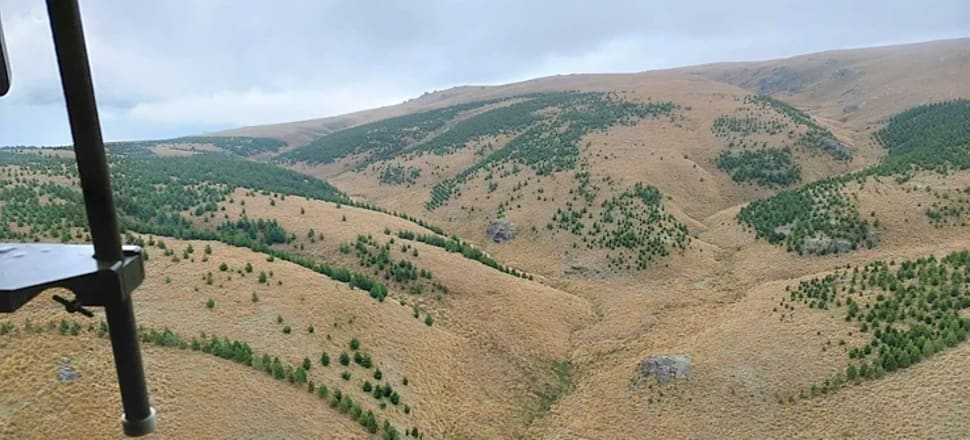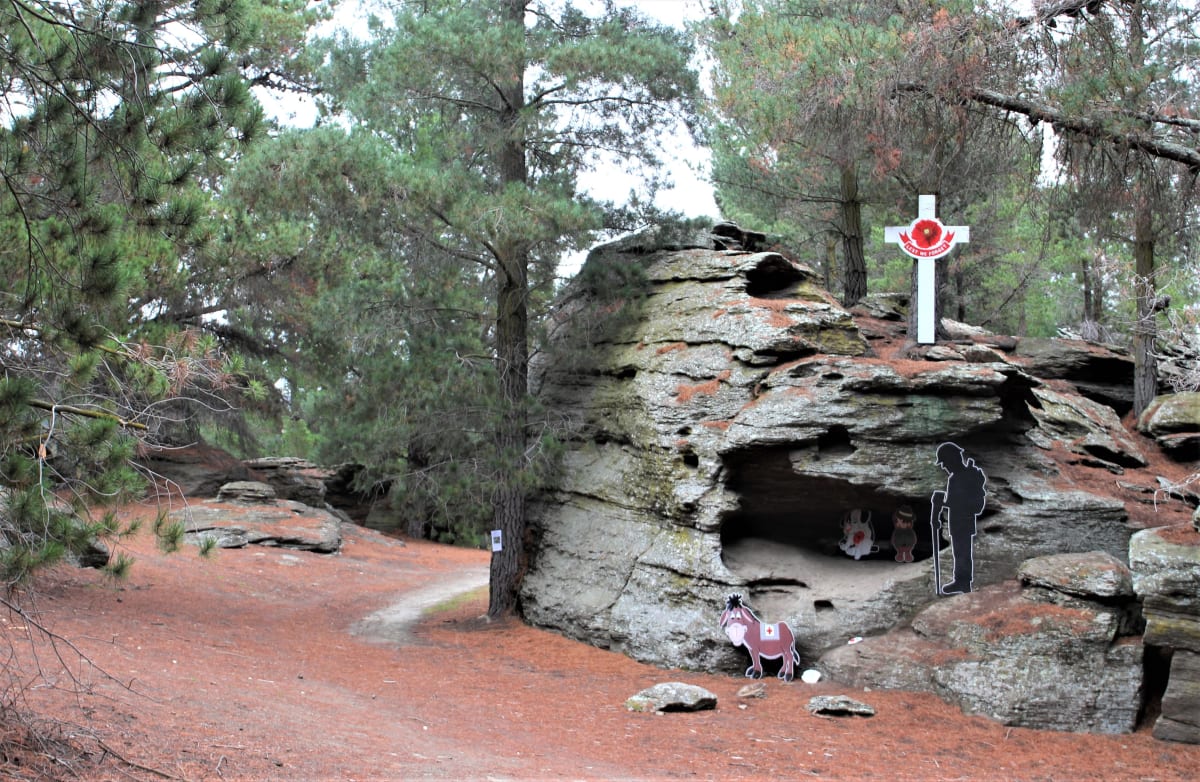
Getting the right tree in the right place is no mean feat in Central Otago and some believe those needing to plant pines should do it somewhere else
Nor’westers scatter pine seed across Central Otago’s rugged terrain and millions of dollars are spent removing the resulting wilding trees.
Pines are losing favour in other parts of the South Island too because of environmental concerns.
Yet huge demand for conifer seedlings is outstripping supply.
Managed forestry for timber production is a valued industry but a big push for planting is coming from farmers, local authorities and businesses seeking to offset carbon emissions.
The not-for-profit Central Otago Wilding Conifer Group, formed a decade ago out of concern over the wilding invasion of “iconic” landscapes, worries large-scale planting could be heading its way because land is cheap and legal constraints few.
“This would come at a huge cost to the district in wilding control, loss of landscape and biodiversity values, reduction in water yield in seasonal dry periods and wildfire risk,” says spokesperson Phil Murray.
But the government’s national environmental standards for plantation forestry(NES-PF) do little to protect the region, he says.
“The emissions trading scheme has been established without the necessary legal framework to avoid unintended consequences, one of which is ETS-registered forests, which have the potential to generate huge profits, being established in inappropriate locations such as Central Otago.”
The NES-PF hands councils little control and pine forests in Central would be a source of significant wilding spread the cost of which is not met by the forest owner.
Hardy and fast-growing, Pinus radiata is widely favoured as a forestry tree, but in Central Otago it’s also widely loathed as a spreader, making for a prickly problem for landowners.
“Farmers in Central may need to think outside their own properties and district when looking to offset their greenhouse gas emissions,” says Murray.
“This could include farmers combining resources to buy properties in other regions better suited to forestry.”
He says Central’s climate slows tree growth, so it makes more commercial sense for large-scale planters to go elsewhere.
Win to pine opponents
The wildings argument has traction in the tourism industry, with the area’s unique rocky landscape threatened by the pines’ spread.
And the anti-wilding group gained a victory this month when with 37 other submitters it successfully opposed an application by Lammermoor Station to plant a 66ha carbon forest on an area classified as outstanding natural landscape.
Saying they “respect and welcome” the landowner’s decision to withdraw the application, group chairperson John Cooney says they “hope this sets an example for the whole district, and that future applications are focused on restoration of our vulnerable landscapes and biodiversity”.
The group also recommended the felling of pines at the southern entrance to Alexandra, an area enjoyed by walkers and bikers for decades.
Locals protested for 18 months against the loss of what they consider a shady, sheltered haven on Central Otago District Council land but lost out to those wielding the wilding-pine argument.
The council went so far as to amend its new wilding-pine policy to ensure the trees all came down at once after the local community board agreed to a staged removal to soften the blow for residents.
Residents now claim the district council is acting illegally in felling the trees. Councils have an obligation under the Reserves Act 1977 to have management plans in place for reserves within five years of creating them.
Residents’ group spokesperson Chris Winter says the area was given reserve status about 70 years ago and no plan is in place.
He says such a document would have included the need for public consultation before decisions are made.
He also says the council’s ban on staging tree removal is contrary to its own actions as another area of conifers at the Lower Manorburn Dam has been partly removed with the rest to come down at a later date.
The council has been approached for comment on the group’s claims.

South of Alexandra, wild winds two years ago bowled much of a council-owned pine plantation at Grovers Hill near Roxburgh.
The council, faced with either replanting or taking a big financial hit on the forest’s carbon credits, has found a Pinus radiata-free solution.
Parks and recreation manager Gordon Bailey says if they didn’t replant within four years, they stood to lose $675,265 of carbon credits.
Hybrids and natives
The cheap option would have been to plant Pinus radiata, but instead the council is going with the popular but more expensive Pinus radiata x attenuata hybrid at a probable extra cost of a few hundred dollars per hectare for the 11ha area.
An additional 1ha is being planted in natives at five times the hybrid pines’ cost, with the added disadvantage of not satisfying carbon-sequestration needs.
“Grovers Hill is a forestry block that generates revenue and it has always been the intent to replant the site.
“It simply comes down to the right tree in the right place,” Bailey says.
Mayor Tim Cadogan says the change is aimed at replacing the harvested trees with a species that won’t cause issues with its seedlings, while “providing a good long-term investment for the community both economically and recreationally”.
It’s also intended to develop bike and walking tracks.
Cadogan says unlike Pinus radiata, the hybrid is not listed as a wilding conifer in the Otago Regional Council’s pest plan.
It has a lower spreading risk due to its tightly closed cones, which need extreme heat to open.
Forest geneticist Heidi Dungey from Crown research institute Scion says the hybrid’s parent species, Pinus attenuata, relies on forest fires to melt the resin encasing the cones to release seed.
“The hybrids between Pinus radiata and Pinus attenuata are therefore expected to retain at least some of these characteristics.
“This hybrid will be much better than Pinus radiata or most other exotic pine alternatives at retaining seed.
“However, we need to do more consulting as to whether this has been tested and what might need to be further researched.”
Great if you can get it
Lack of availability of the hybrid concerns the wilding-pine group, with demand largely being driven by carbon forestry.
The hybrid could be two or three years away from being available, says Rangiora Nursery owner Derrick Parry.
Corporate clients looking to offset emissions are ordering the seedlings by the hundred thousand a year for up to 10 years in advance.
“There’s a shortage of control-pollinated Pinus radiata seed and there’s an even bigger shortage of hybrid seed.
“You can’t get any basically - it’s a closed shop. There isn’t enough to supply even some of our key clients with the wait-list hundreds of thousands of trees long.”
Producing hybrid seed is a long process making it impossible to know when supplies might catch up with the burgeoning demand.
“Nothing happens quickly in forestry. How long you are going to have to wait is a bit like how long is a piece of string.
“We just have to wait and see how much seed we get in the springtime.”
The nursery grows millions of Pinus radiata cuttings a year in Canterbury and also grows the hybrid from seed.
Seed stocks from the only supplier, Ngāi Tahu-owned Proseed, are under pressure.
The company is trying to increase stock as many big growers are looking to replace high-altitude, hardy douglas firs with the hybrid.
The attraction is its similar snow-resistance and cold-hardiness with the added bonus of not readily spreading.
The wilding-pine group’s Murray worries the supply issue could see Pinus radiata being selected in Central Otago as the next best option.
“We would dearly love farmers in the Maniototo to replace their Pinus contorta shelter belts with the hybrid and would like this to be made as easy as possible.”
Conifer rethink spreading
At the top of the South Island, Nelson City Council is establishing a “Right Tree, Right Place” task force to lead a review of how it manages its 700ha of plantation forests in the Maitai, Brook, Roding and Marsden valleys.
Over the past 10 years commercial forestry has earned the council about $715,000 a year but concerns over wilding pines, loss of recreational access and the effect of sedimentation on Nelson’s waterways drove councillor Rachel Sanson to question the replanting of pines after harvest.
The task force will evaluate forestry options and their socio-economic and ecological effects on the region for the next 25 to 30 years and make recommendations to council.
Task force lead and former parliamentary commissioner for the environment Morgan Williams says in a council press statement that there is no “one-size-fits-all solution” for forestry management.
In 2020 neighbouring Tasman District Council decided to retire 150ha of plantation forest and gradually replant with permanent native and exotic trees.
The move, costing about $780,000, was mainly aimed at creating a biodiversity and recreational asset.
Next winter 36,000 native trees and 15,000 exotics will be planted adding to the 7000 natives already in the ground, council communications and change manager Chris Choat told Newsroom.
The government recently closed public consultation on how to best manage the environmental effects, including wilding conifer risk, of all forest types. This included non-production forests.
Guidelines on what species are best for planting in high-country areas are also being updated.
Sherman Smith, manager of the national wilding conifer control programme at Biosecurity New Zealand, says the NES-PF requires risks to be assessed and mitigated before the planting of new production forestry.
To Central Otago’s wildings group it’s not only new plantations that pose a threat but also those in urban and in rural areas that have been there for decades.
“The issue of wilding conifer control is one tied up with our wider cultural journey of who as a nation or as a district we see ourselves to be,” Murray says.
“If we value those things that make us unique like tussock grassland landscapes interspersed with native shrublands, native wildlife and mountain streams and rivers, as younger generations increasingly do, then we need to understand what it’s going to take to protect them.”
Made with the support of the Public Interest Journalism Fund








